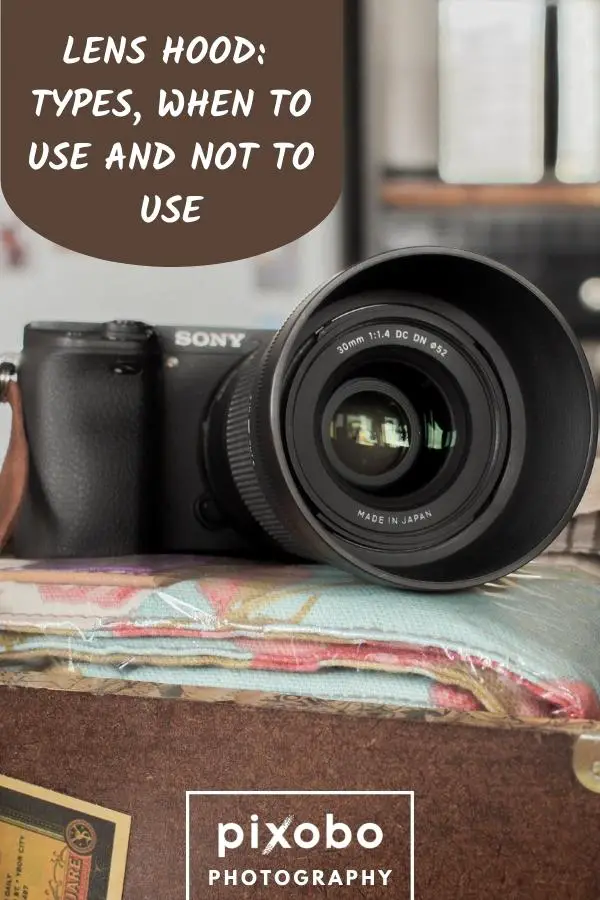If you own a DSLR or mirrorless camera, you may have heard of or used a lens hood. But interestingly, there is an endless debate as to when to use a lens hood and when it is not necessary.
Most newbie photographers also think the only purpose of a lens hood is to cover the lens. On the other hand, some of them think that it is just for showmanship.
The truth is that a lens hood is more than just covering your camera lens or showing people that you look like a professional photographer. Technically, if you want higher-quality images, you should know when to use lens hood or not.
But then, it is not as simple as that. In this article, you will learn everything about lens hoods, their types, and their uses.
Table of Content
What Is a Lens Hood?
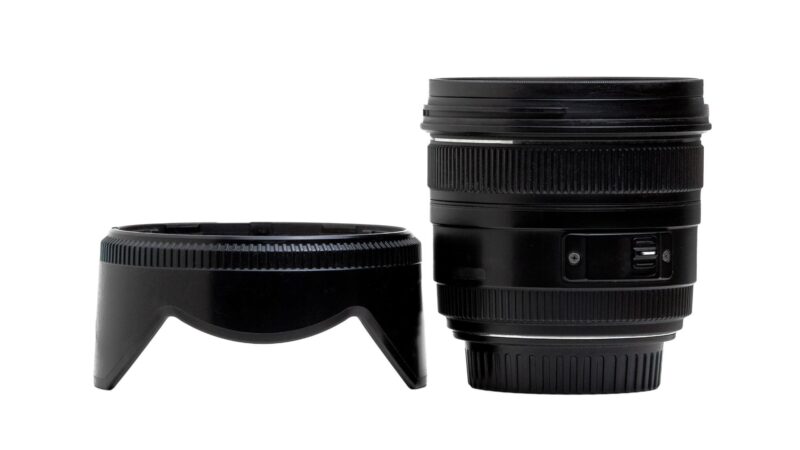
A lens hood is a piece of plastic or metal accessory for cameras. As the name suggests, it is a cover for your camera lens. Sometimes called a lens shade, a lens hood is attached to the front of your lens.
Some cameras are sold with a lens hood, but others don’t include it, so you have to buy it separately. Lens hoods are not universal, though.
What Are the Uses of a Lens Hood?
As mentioned above, a lens hood acts as a partial cover to your camera lens. But why would a photographer want to cover his camera lens? How can it affect the resulting images? What will happen if you don’t use one? Is it always necessary to have one?
To answer these questions, here are the purposes of a lens hood, regardless of the type:
1. A lens hood reduces lens flare.
Light is a very important factor when taking photos. However, there could be unwanted light that can enter your lens.
Without a lens hood, the light will scatter on the sides, which is also known as lens flare. On the other hand, a lens hood will reduce or block some light rays from outside the view angle by creating a shadow over your camera lens.
2. A lens hood adds contrast.
Once stray light or lens flare enters your lens, it will block your view. This will also cause your image to be washed out, as well as discoloration.
Once this happens, there will be a reduced contrast that will greatly affect image quality. When used properly, a lens hood can give your images a sharper contrast. You can easily notice the difference.
3. A lens hood protects your lens.
Aside from blocking unwanted light and adding contrast to your photos, a lens hood also protects your lens from damage. If you own a camera, two accidents can happen. You might drop your camera, or it will hit something hard.
A lens hood reduces the chance of having a damaged lens. Your lens will also be safe from bumps, fingerprints, and scratches.
What Are the Common Types of Lens Hoods?
Lens hoods come in different sizes and shapes, but all of them have the same uses. However, each shape offers a different result, and you cannot just use any shape you want.
The two main types of lens hoods are the round lens hood and the petal lens hood. Other less common lens hood types are the square lens hood and bayonet lens hood.
1. Round Lens Hood
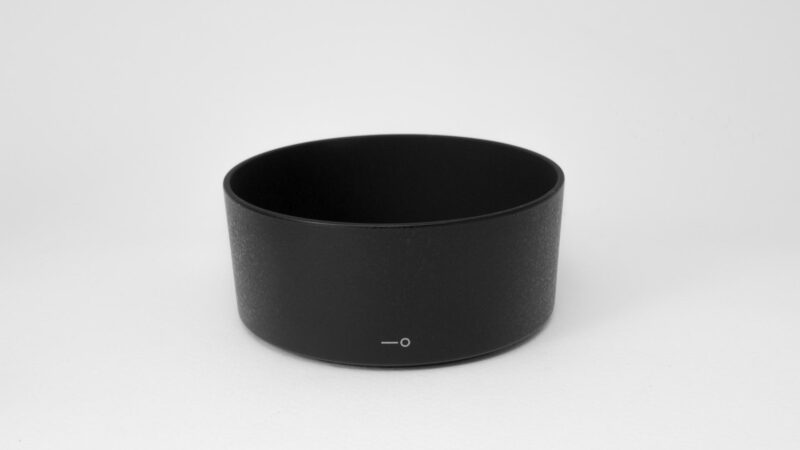
As the name implies, a round lens hood has a tubular shape and a simpler design than a petal lens hood. Because of its circular shape and it has no corners, you don’t have to go to any particular position. Round lens hoods work well with prime lenses (lenses that have longer focal lengths) since they tend to block unwanted light completely.
2. Petal Lens Hood
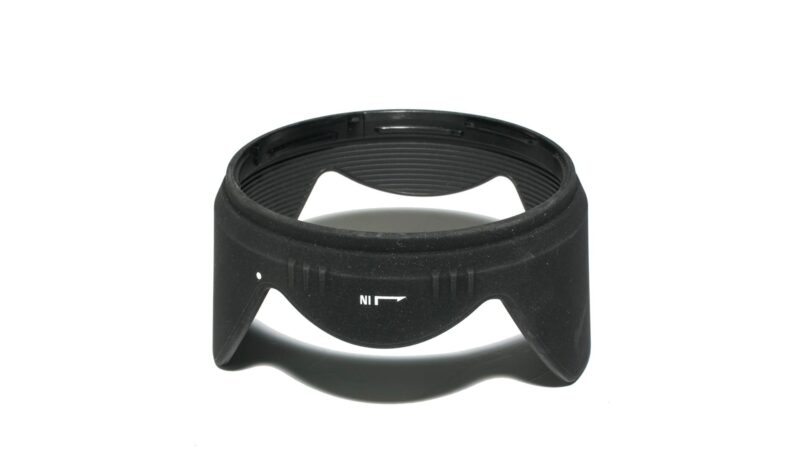
Also known as a flower hood or tulip lens hood, a petal lens hood is a round lens hood with extensions, not a round hood with cutouts. Its curved notches help block some light rays. Thus, maximizing their coverage area.
Hence, this design is ideal for wide-angle lenses. But then, you need to fit it perfectly to avoid a part appearing in your photos.
3. Square lens hood
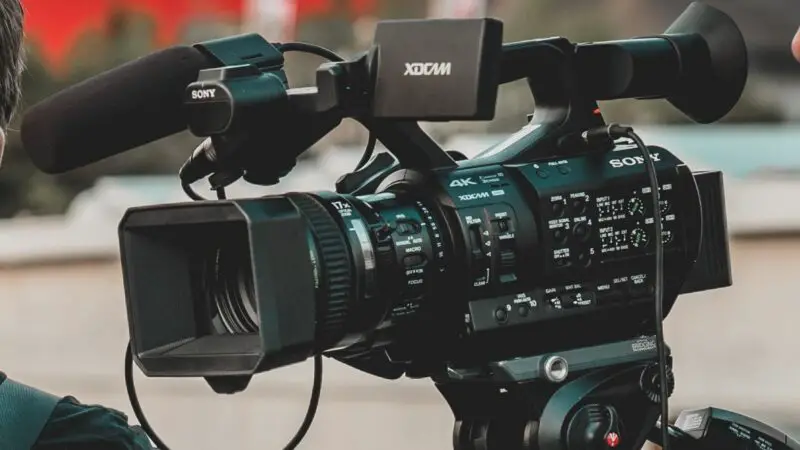
Since there are times when a round lens hood may not block all lens flare, you may need to use a square lens hood. In general, square lens hoods are shorter than other hood types and are usually used for shooting with ultra-wide angle lenses. But to avoid image vignetting (darker corners) due to its shape, you also have to position it correctly.
4. Bayonet Lens Hood
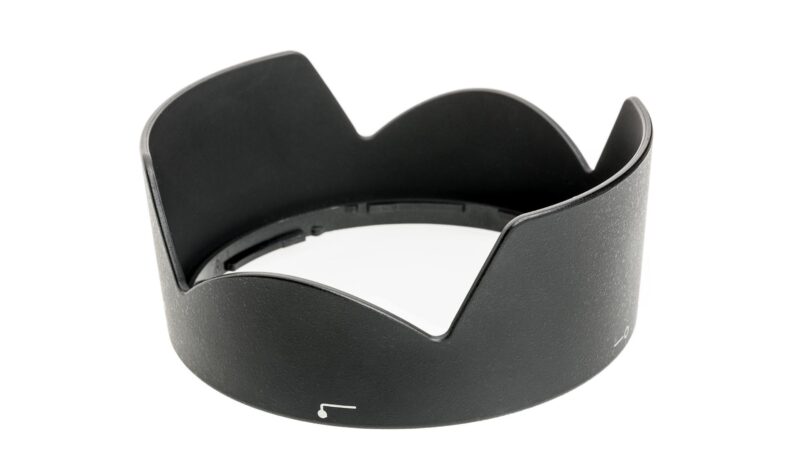
The bayonet lens hood is the least common type due to its design. Most of them have a tulip shape, but they are not as adjustable as the petal lens hoods.
This is because bayonet lens hoods should be screwed up in front of the lens body in different shapes. This type of lens hood is also the cheapest but has the lowest rate of lens protection.
Round Lens Hood vs. Petal Lens Hood: Which One is Better?
Square and bayonet lens hoods are not so common. But since all camera sensors are rectangular, petal lens hoods appear to be better than round lens hoods.
However, it is not always true. Note that the latter will always block more stray light than the former. Therefore, both lens hoods are great depending on your needs.
How to Attach a Lens Hood Properly?
Regardless of the type of lens hood, attaching it to your camera is straightforward. Although the steps are simple, installing it incorrectly will not serve its purpose.
To attach a lens hood properly, connect it to the lens head and rotate it clockwise until you hear a click. Note that the red dot on the hood should be aligned with the red dot on your lens.
When Do You Need a Lens Hood?
Generally speaking, you should always have a lens hood. As you have read above, a lens hood not only helps you produce high-quality images but also protects your lenses.
You need a lens hood if you are in rough situations, such as snowy weather, even if you are not taking a photo. Simply attach it to your lens in reverse.
When Do You Not Need a Lens Hood?
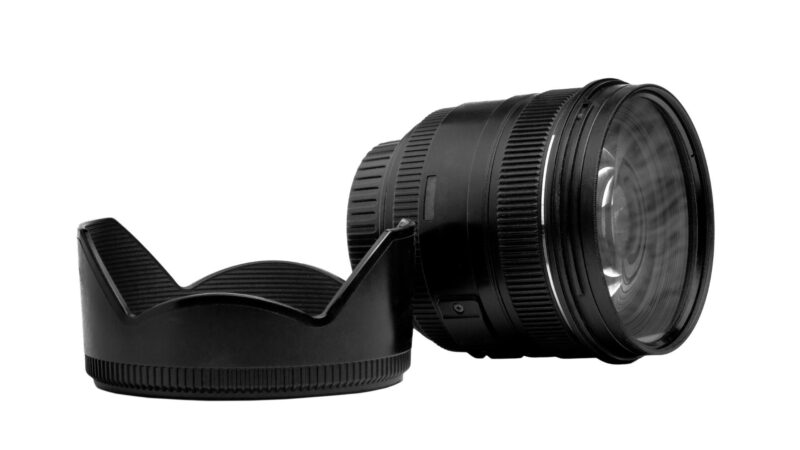
Despite all the benefits of using a lens hood, there are some instances when you should not use a lens hood. In fact, there are also cases when you don’t need one because it can affect the quality of your images.
Although they serve as added protection to your lens, here are some specific scenarios when lens hoods should not be used at all:
1. When Taking Photos During a Windy Weather
If you are taking photos during windy weather and there is no direct sunlight, using a lens hood may cause your images to be blurry. This is because lens hoods are quite heavy, and the added weight to your camera can cause vibration.
The same problem can also happen if you are taking photos while inside a helicopter with windows open.
2. When Taking Photos During Golden Hour
Similarly, you don’t need a lens hood when you are taking photos during golden hours. This is called the ‘magic hour’ by professional photographers.
The golden hour is defined as the first hour after sunrise and the last hour before sunset. During these hours, the sun is gold, orange, and red. It means that the sun is low and light is not scattered or flared.
3. When Your Camera Sensor Is Small
Lens hoods are also not practical to use if your camera has a small sensor. Otherwise, you may also capture some part of it while taking a photo.
In some cases, you cannot attach a lens hood if you are already using a camera lens filter. But more importantly, you should not use a lens hood if you want your images to have some flare effects.
4. When You Are Using a Macro Lens
Ideally, you don’t need a lens hood if you are using a macro lens. When doing macro photography, it means that you should be very close to your subject to achieve optimal focusing.
You will also need as much light as possible, and using a lens hood will block some light rays. The added length of a lens hood is also not good for macro photos.
5. When You Are Using an On-Camera Flash
You should not also use a lens hood while using an on-camera flash (external flash attached to your camera). Otherwise, the shadow of your lens hood will likely appear in your photos.
Meanwhile, an off-camera flash can be positioned elsewhere since it is not attached to your camera. Therefore, you can use a lens hood with an off-camera flash.
Should I Use a Lens Hood Indoors?
Using a lens hood in indoor photography depends on the amount of light available. If there is no strong stray light that can enter your lens, you may not need a lens hood.
But if a lens hood is already attached to your lens and there’s not much difference in the output, don’t remove it. Again, a lens hood can also protect your lens from damage.
How to Store a Lens Hood Properly?
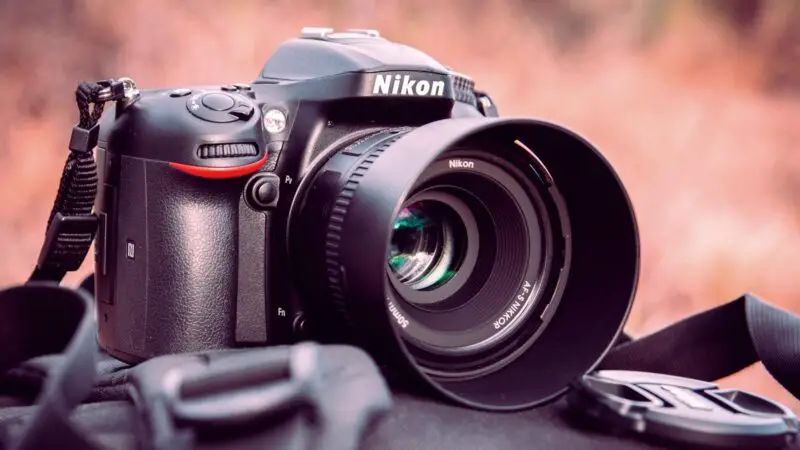
If you will not use your lens hood, remove it from your lens by rotating it counterclockwise.
If you will not use your camera and you did not bring your camera bag, connect the lens hood to your lens in reverse . Make sure it is locked. You can also do this to maximize the space in your bag. Alternatively, stack them within each other.
Lens hoods are a very important camera accessory. Although you may not need to use them in every situation, you should always bring them with you.
They are also not designed to fit all lens sizes, so don’t believe if someone tells you that lens hoods are universal. Before using one, make sure that the hood thread size is the same as the filter thread size.
